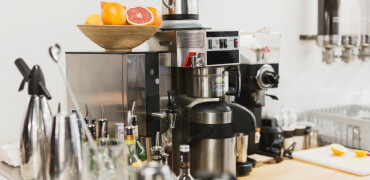Whether you call them field glasses or binoculars, you are describing the two special lenses that are allowing you to see something (located a great distance away) at an up-close view. All binoculars produce the same result, but not all are alike.
If you are interested in buying a pair of binoculars you should take some time to ensure that you are choosing the best pair for your needs. Ask yourself what you hope to do with them, and you will find that there are many further factors to consider.
The Types of Binoculars
Today, most consumers can access several different types of binoculars, but the greatest differentiation begins with size. There are the "compact" and the "standard" binoculars. These are exactly as they sound with the compact models being much smaller and lighter in weight, and the standard size being larger and heavier.
What's the difference between them - apart from size and weight? Usually, the standard binoculars are those that can provide truly optical views, while some of the compact models offer only "digital" views. For the most part, many binoculars still rely on the glass or optics to provide their zoom functions.
The Features
This leads us to the need to talk about the various features that are available in most binoculars, and which should be a major point of consideration for those shopping for binoculars.
The first thing to consider is the amount of "zoom" the binoculars have. Quite often this is described by the use of a number followed by the letter "x" in the model name. For example, the Nautica 7x50 offers a 7x magnification of the subject and feature 50mm lenses to help with the zoom.
Magnification is how binoculars make things appear much closer than they are, and usually the higher that the lenses are able to magnify (such as 10x) magnification, the less stable the view. So, the bird being viewed through the binoculars using the fullest magnification may be hard to keep in the field of view because of the use of this function. Thus, many binocular makers include a tripod mount on the bottom of powerful models.
We mentioned the lenses, and that means we need to speak about "aperture". This is not the same as the aperture of the lens on a camera but is instead the size of the diameter of the lenses on the binoculars. Though most binoculars have a cone-like shape to each of the eyepieces, the aperture is the largest area of the lens. The most common ranges are from 20mm to 60mm, and the larger the opening the more light available to the viewer.
The aperture of the lenses also has to do with the size of the field of view. Obviously, a pair of compact binoculars will tend to have a limited field of view (often little more than 20mm), but the binoculars with the 50 to 60mm lenses tend to have very wide ranges.
The control of the image seen through the binoculars is accomplished through the focus function on the binoculars. There are two styles available - the individual focus, which is what is commonly used in "marine" models and which give very precise focus by allowing each eyepiece to focus individually. Then there is the diopter control which accomplishes a generally clearer image by attempting to create a balanced view through each eyepiece.
Pricing
Because binoculars are optical equipment it is not likely that you are going to want to invest in "cheap" models. Though there are some very reliable sets of compact binoculars that can be found at relatively low costs, for the best experience, it is best to begin by searching first by the desired features and then by the price.
For example, we would recommend that you choose the type of binoculars you prefer. For this illustration, we'll say that you prefer a standard sized pair. You must then determine if you want a lot of zoom or a moderate amount. We will say that around ten times is required. You then have to consider the aperture, which means choosing based on what you will do with the binoculars.
Consider that someone who likes to watch wildlife will want a wider field of view along with a good zoom. This might mean a pair with 10x50 that uses the diopter control for focus in order to really focus quickly on animals or birds at a distance.
Only after narrowing it down to these factors should the options get sorted by price. Look also for feedback from other owners since this is very valuable information too. There are many excellent binoculars at remarkably affordable prices, but it is always best to begin the selection process with a bit of clarification about what you need.




